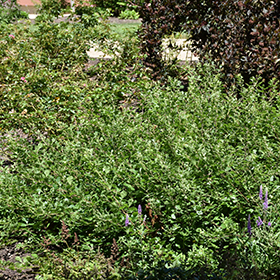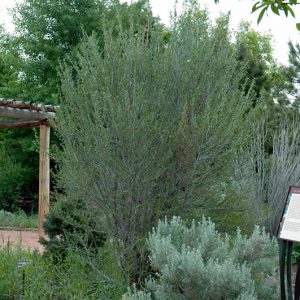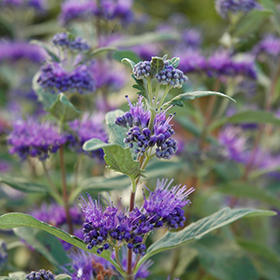Description
Growth & Care
| USDA Plant Hardiness Zone | 3a |
| Growth Rate | Average |
| Recommended Pruning Method | Late Winter Pruning |
Foliage
| Foliage Type | Deciduous |
| Fall Color | Yellow |
| Plant Form | Spreading |
| Foliage Markings | Veins |
Flowers
| Flower Fragrance | Unscented |
Additional Categories
| Additional Category | Sumac |
| Landscape Application | Massing, Rock, Garden, Groundcover, Naturalizing |
Details
Planting & Growing
Autumn Amber Creeping Sumac will grow to be about 14 inches tall at maturity, with a spread of 8 feet. It tends to fill out right to the ground and therefore doesn't necessarily require facer plants in front. It grows at a medium rate, and under ideal conditions can be expected to live for approximately 30 years.
This shrub does best in full sun to partial shade. It is very adaptable to both dry and moist growing conditions, but will not tolerate any standing water. It is considered to be drought-tolerant, and thus makes an ideal choice for a low-water garden or xeriscape application. It is not particular as to soil type or pH. It is highly tolerant of urban pollution and will even thrive in inner city environments. This is a selection of a native North American species.
Landscape Attributes
Autumn Amber Creeping Sumac is a multi-stemmed deciduous shrub with a ground-hugging habit of growth. Its average texture blends into the landscape, but can be balanced by one or two finer or coarser trees or shrubs for an effective composition.
This is a relatively low maintenance shrub, and is best pruned in late winter once the threat of extreme cold has passed. Deer don't particularly care for this plant and will usually leave it alone in favor of tastier treats. Gardeners should be aware of the following characteristic(s) that may warrant special consideration:
Suckering
Autumn Amber Creeping Sumac is recommended for the following landscape applications:
Mass Planting, Rock/Alpine Gardens, General Garden Use, Groundcover, Naturalizing And Woodland Gardens
Ornamental Features
Autumn Amber Creeping Sumac is primarily valued in the garden for its broadly spreading habit of growth. It has attractive forest green foliage with light green veins. The large glossy lobed compound leaves are highly ornamental and turn outstanding shades of yellow, gold and orange in the fall. The brick red stems can be quite attractive.




